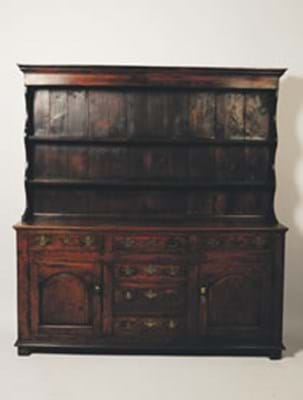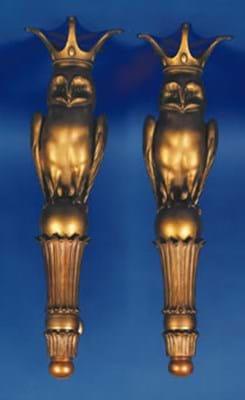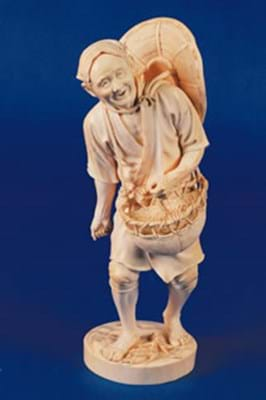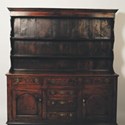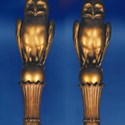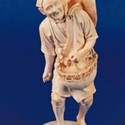By comparison, decent Victorian and Georgian mahogany furniture struggles to sell well if at all.
Highlighting the current contrast in the health of these two markets was the punchy price realised for the top lot at Dorchester back in late January - a straightforward George III oak and elm dresser.
The 6ft 4in (1.93m) wide dresser with its raised back and standard base was unexceptional in form, but it was a good example of its kind with a wonderful colour, superb surface and original handles. It was also a perfect fit for the homes of two tenacious private buyers who contested it way past its £1500-3000 guideline. It finally sold at £10,000.
If this price reflected the lengths to which determined private buyers will go to secure the right piece, the multiple-estimate bid needed to secure an Art Nouveau wardrobe attributed to Shapland and Petter reflected the evolving market for decorative furniture.
"It was just the sort of thing that would have been included in one of our Sunday sales not so long ago," said auctioneer Guy Schwinge.
Consigned to this fine sale at £300-500, the slender 3ft 7in (1.09m) wide wardrobe, with its marquetry panelled doors decorated with stylised peacocks and foliage, attracted the attention of several interested parties who contested it to £2500.
Elsewhere, buyers overlooked condition for the decorative appeal of a pair of late George III blue-painted and parcel gilt console tables with inset white marble tops.
Although the white-painted, classically robed female figure supports would originally have been bronzed, the tables benefited from a solid provenance.
Inherited by the private vendor's grandmother, Mrs V Campbell, they originally graced the Campbells' Kent country seat, Coombank in Sevenoaks designed by Robert Adam. One of the tables at Dorchester bore a Coombank label.
Measuring 21 x 2ft 8in (53cm x 81cm), the console tables were comparatively small, but proved a big enough attraction for a commission bidder from South-East England to secure them at £5000.
Outside the furniture, the most coveted entry was an exquisitely worked Japanese okimono in excellent condition, signed by one of the Tokyo School's masters Seizan.
Not only did this school produce many of the Meiji period's finest quality okimonos, it also produced some of the largest examples and this one was 16 1/2in (42cm) wide.
It depicted an elderly couple seated on a fringed mat and enjoying a meal.
There was no shortage of buyers with specialist interest in the piece which was consigned from the Dorset village of Corfe Castle. Bids came from the Far East, America and London before the okimono went to a UK buyer at £7500.
Other high flyers at the sale included an eye-catching set of four 2ft 6in (76cm) tall wall lights in the form of cast bronze owls.
Topped with crown light fittings and dating to c.1900, the owls stood on Regency-style carved giltwood wall brackets. Mr Schwinge reckoned the lamps, consigned from a country house cellar, were just the type of smart, commercial entry to "end up in the hallway of a Fifth Avenue apartment".
In the event, they fetched £6200 (estimate £800-1200).
Consigned from a deceased estate was another highly decorative piece - a 2ft 3in (69cm) high pair of 19th century Louis XIV-style bronze and ormolu table candelabra with cherub satyr figures. These went to a leading international dealer at £3000.
Elsewhere, while some felt the proportions of a George II walnut longcase clock, missing the lower part of its plinth base, were bordering on provincial, at least eight telephone bidders thought otherwise.
Made by Jasper Taylor of Holborn, its warm honey colour proved an irresistible draw, helping it to double expectations at £4400.
Oak remains a strength in tough times for furniture
Duke’s, Dorchester, January 27Buyer’s premium: 15 per centOAK furniture’s rustic aesthetic and its ability to complement modern interiors, has kept it in demand by private buyers and decorators as well as oak dealers, and prices have tended to hold up during the furniture doldrums.

